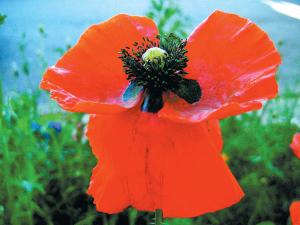Annuals are every gardener’s favorite flowers
Gardens hark back centuries, so it is no surprise that many of our terms go back hundreds of years as well. A service commemorating the anniversary of a loved one’s death was called an “annuel.” This became our word annual, meaning a plant that lives only one year.
The notion of gardens made up entirely of flowers was not popular until the 19th century.
A cutting garden, by contrast, is merely a production garden that provides cut flowers for use indoors.
However, whether you want flowers to look at outside or inside, annuals are every gardener’s favorite. You can buy annuals in individual pots or more commonly in six-packs or flats.
Picking out colors for your flowerbeds is truly an art, so try using artists’ tools. Humans actually see the colors red and yellow quicker than other colors.
Use reds and yellows to draw the eye to a focal point in the garden, perhaps around a favorite sculpture or to frame a view.
Yellow flowers next to steps or a sidewalk will subconsciously alert visitors. It is even said that a house sells faster when it has yellow flowers planted around.
Since food really does taste better when served around red, plant lots of red annuals around your outdoor entertaining spots such as patios and decks. Red flowers also attract butterflies and hummingbirds. Men seem to prefer yellow-based reds such as scarlet, and women tend to choose blue-toned reds, like burgundy.
Good red annuals include zinnias, celosia, salvia, and corn poppy (Papaver rhoeas).
Yellow annuals are common in marigolds, sunflowers, calendulas, and snapdragons.
Most annuals, whether red or yellow, prefer full sun and loose, rich soil. Be careful and don’t go overboard on fertilizing or you may end up with all leaves and no flowers. If you are planting annuals grown in individual peat pots, cut off any pieces of the peat pot above the soil surface, because it can act as a wick, draw water from the ground, and dry out the plants. Right before you plant your annuals, be sure to give them a thorough watering. Annuals do best in well-drained soil with a pH between 6.3 and 6.7. You can dig in compost to increase the soil’s organic matter. Soil with higher organic matter will hold water longer and let plant roots spread out.
Set your annuals in the garden at the same depth that they are in the six-pack or pots. Tamp the soil down firmly around each plant. Water thoroughly to get rid of any air pockets. Organic mulch such as cocoa bean hulls or leaves keeps moisture in the soil and holds down weeds.
If the annuals are pot-bound, gently loosen the root mass with your fingers to help the roots grow out into the soil.
Most annuals will flower all summer until frost. You can encourage more blooms by cutting off dead flowers, a process called deadheading. Just pinch off or cut off old blossoms when they start to die. This keeps the plants from setting seeds and makes them put all of their energy into producing more flowers.
Because annuals have shallow root systems, they need a steady supply of water. Try to stay away from overhead watering, because it not only stains delicate plants but also can encourage diseases and fungus.
Plant annuals now and your gardens will bloom right up until frost, when they will die a natural death. Let a few flowers go to seed late in the year and you can plant them anew next year for your own “annuel” or remembrance.




















































